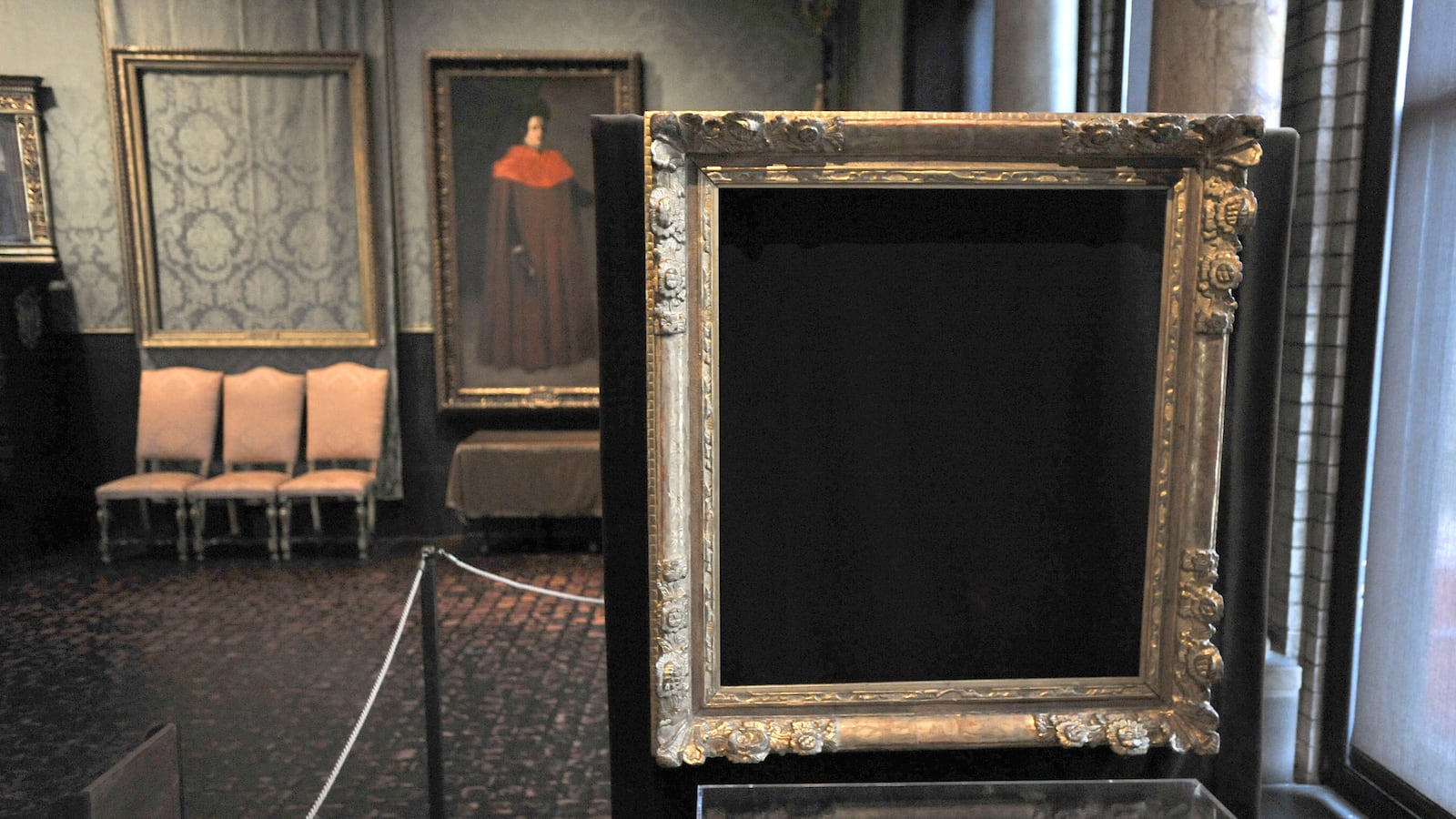Depending on how much you think “priceless” means, what’s probably the biggest art theft of all time took place 23 years ago this week at the Isabella Stewart Gardner Museum in Boston. The Federal Bureau of Investigation has led the search for the missing masterpieces ever since: a Vermeer, two Rembrandts, a Manet, a Degas, and eight less important works. More than two decades later, no arrests have been made. No art has been recovered. And when the Feds announced Monday that they had “new information” on the heist, no meaningful details were given.

The FBI is playing up the offer of a $5 million reward for information leading to the recovery of the stolen works. “They are crowd sourcing to try to get some tips from the public,” says Robert Wittman, himself a former FBI agent and an internationally recognized authority on art theft. “They want to use websites, digital billboards, Facebook, Twitter, all the social media, to get as many eyes as possible.” The announcement of “new information,” however vague, is what Wittman calls “a hook” to get attention. But after the paintings have spent so many years in the hands of careless criminals, he cautions, there may be little or nothing left of them.
The FBI statement Monday said some of the stolen art appears to have moved through Connecticut and Pennsylvania several years ago, but where it is now they don’t know. It said it has the identities of the original thieves, but did not reveal them and did not say why. When you visit the slick new FBI website devoted to the theft, however, the underlying message is pretty clear: the feds have about given up catching the bad guys. All they want is the art, and they’re ready to pay for it.
“Really we’re past the point of statute of limitations on this case,” the FBI’s Special Agent in Charge of the Boston Office Richard DesLauriers says flatly on one of the site’s video clips. “So we’re not particularly interested in at this point pursuing criminal charges against those who are responsible for the theft.”
In a separate clip Anthony Amore, who is now the museum’s security director, refers to the reward being put up by the Gardner: “We stand behind these offers that we’re making and I can’t say it any more clearly than that.” Some reports have estimated the works’ value at $500 million, but that’s irrelevant, says Amore. They can never be sold on the open market and they can’t be replaced. (Only 36 Vermeers exist anywhere in the world.) If you want to exchange those paintings for cold cash, the amount of the reward, or ransom, if you like, is the going price.
Wittman, who was the FBI’s main undercover agent working art theft cases until 2008, thinks that many of the works stolen from the Gardner may never be recovered, or will be found in such bad condition they’ll have gone from priceless to worthless. “Any time that paintings are stolen and they are cut out of their frames, unless you effect a very quick recovery, it has been my experience that those paintings deteriorate very quickly,” Wittman said on the phone from Pennsylvania, where he now runs an art security company. As Old Master paintings are bent or rolled, the paint cracks and drops off. “Thieves hide them behind refrigerators, they hide them in closets,” says Wittman, “there are very few environmental controls.”
From 2006 to 2008, Wittman carried out an FBI undercover investigation targeting a group of criminals in southern France who had their hands on several stolen paintings, including Picassos. As he writes in his book, Priceless: How I Went Undercover to Rescue the World’s Stolen Treasures, when people connected with the mob there began to trust him they offered to sell the two most important works stolen from the Gardner: the Vermeer and a Rembrandt seascape, which is the only one the artist is known to have painted.
There was no discussion with the French criminals about how they’d gotten the paintings, if indeed they had them at all. But both had been taken out of their frames still on the stretchers, “so there is a possibility those could be okay,” says Wittman. “Those that were cut out, nobody has heard anything about them.”
In the end, in 2008, jurisdictional issues blew the investigation, says Wittman. He had gained the confidence of his key contacts at meetings in Miami and Spain, but the French would not allow him to work undercover on their turf. When Wittman tried to hand the investigation over to a French agent, the criminals got suspicious and the deal fell through. Eventually other works from other heists were recovered in France, but no one saw the paintings from the Gardner. So the search goes on.






